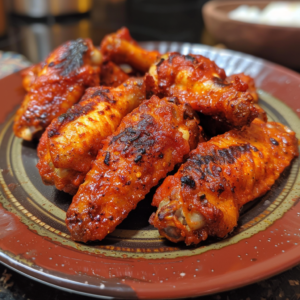Spicy foods ignite a thrilling rush of adventure across global cuisines, symbolizing tradition and bold innovation in the culinary arts. As diverse as the cultures from which they originate, these fiery dishes add warmth, depth, and excitement to dining tables worldwide. This article explores the world of spicy foods, including their origins, health benefits, and the various ways they are enjoyed from Asia to the Americas and beyond. Recognizing the rise in vegetarian and vegan options, we will see how spicy foods appeal universally, offering something for everyone, no matter their dietary preferences. Ready to turn up the heat? Let’s dive into the spicy spectacles that await.
Introduction to Spicy Foods
The Roots and Appeal of Spicy Cuisine
Spicy foods are not just about the thrill; they’re a testament to cultural history and culinary evolution. From the zesty jerk chicken of the Caribbean to the piquant curries of South Asia, spices like chili peppers have not only seasoned our dishes but also our histories. They add more than just heat; they infuse meals with flavors that transcend the ordinary, turning simple ingredients into extraordinary experiences.
- Historical Significance:
- Spices were so coveted in the past they were used as currency.
- The spice trade shaped ancient trade routes and brought distant cultures closer.
Health Benefits of Spicy Food
It turns out that the kick of heat from your favorite spicy dish does more than excite your taste buds. Ingredients like capsaicin, found in chili peppers, are linked to numerous health benefits, including improved metabolism and reduced inflammation. Not just that, but consuming spicy foods can also contribute to longevity and help in managing weight. For a deeper understanding of how spicy foods can enhance health, you might want to check out the Cleveland Clinic’s discussion on the benefits of spicy foods.
- Promoting Better Health:
- Capsaicin is known to boost metabolism and support fat burning.
- The anti-inflammatory properties of spices help combat chronic conditions.
Cultural Impact of Spicy Foods
Moreover, the preparation and enjoyment of spicy foods often unite people, fostering joy and celebration across cultures. Sharing spicy tandoori chicken at a social gathering or enjoying fiery Sichuan hotpot with friends does more than satisfy hunger. These culinary experiences enrich our social lives and strengthen bonds.
- Enhancing Social Interactions:
- Spicy foods are often at the center of social gatherings and festive celebrations.
- The act of sharing these bold flavors can break barriers and foster a sense of community.
In essence, spicy foods are a celebration of both flavor and life. They challenge our palates, excite our senses, and bring us together in the most delicious ways. As we continue to explore the spicy dishes from around the globe, we’ll discover the versatility and universal appeal that these flavors hold. Stay tuned as we turn the heat up and dive deeper into the world’s spicy food scene.
For a deeper dive into spicy cuisines and to explore more fiery recipes, check out our collection of Spicy Dinner Recipes, which offers a range of dishes that bring heat to the table.
Exploring Spicy Dishes from Around the World
A Journey Through Asia’s Spicy Palette
In the vast continent of Asia, the array of spicy dishes is as diverse as its cultures. From the vindaloo of India, known for its fiery blend of vinegar and garlic, to the tongue-tingling Jjamppong, a Korean seafood noodle soup brimming with spices, Asian cuisines offer a thrilling range of heat and flavor.
- Iconic Dishes:
- India’s vindaloo utilizes a potent mix of chili peppers and traditional spices, creating an intensely spicy and flavorful dish.
- Korea’s Jjamppong combines seafood with hearty vegetables in a spicy broth that’s both comforting and invigorating.
The Fiery Flavors of the Americas
Moving to the Americas, spicy foods are celebrated with great zest. The Buffalo Cauliflower Tacos reimagine a classic American snack with a vegetarian twist, incorporating the bold flavors of buffalo sauce while maintaining a plant-based ethos. In Brazil, the Moqueca uses local spices to simmer seafood or vegetables in a fragrant, fiery coconut sauce.
- Local Favorites:
- Buffalo Cauliflower Tacos offer a spicy kick with a healthy twist, becoming a favorite at many gatherings.
- Brazil’s Moqueca is a testament to the versatility of spicy food, adapting to either seafood or purely vegetable-based versions for a rich and tantalizing stew.
Africa’s Spicy Contributions
In Africa, spices are used liberally to enhance the flavors of both traditional and modern dishes. The Ethiopian Berbere, a spice mixture, is a cornerstone in many dishes, known for its smoky, spicy complexity. Meanwhile, Shakshuka, although widely regarded as a Middle Eastern dish, is also beloved in North Africa for its rich tomato sauce spiked with chili peppers, encasing poached eggs.
- Spice as a Staple:Ethiopia: The use of Berbere in dishes like Doro Wat, a spicy chicken stew, showcases the deep, intense flavors that characterize African cuisine.North Africa: Shakshuka is a prime example of simplicity combined with spice, making it a favorite among spicy food lovers across the region.
Each region’s spicy dishes provide a glimpse into their cultures, histories, and philosophies. These dishes do more than challenge the palate; they connect us to the stories of the places they originate from. Whether experiencing the heat of an Indian curry or the subtle burn of a Brazilian stew, spicy foods transcend borders and bring people together. As we continue our culinary journey, the universal language of spice invites us to explore further and taste more.
Vegetarian and Vegan Spicy Dishes
Celebrating Plant-Based Heat
The rise of vegetarian and vegan lifestyles has brought with it a delicious array of spicy dishes that cater to plant-based diets without compromising on flavor. These dishes incorporate a bounty of vegetables, legumes, and grains, all spiced to perfection to ensure that no one misses out on the heat.
- Innovative Plant-Based Spicy Dishes:
- Buffalo Cauliflower Tacos have turned a classic appetizer into a main dish, using spicy buffalo sauce to coat nutrient-rich cauliflower.
- Spicy Stir Fry with Sambal Oelek utilizes a blend of fresh vegetables and fiery sambal sauce, proving that vegan food can be as bold and satisfying as any traditional dish.
Global Vegan Delights
From the streets of Thailand to the coasts of Peru, vegan cuisine embraces spices to create dishes that are both flavorful and fulfilling. The Vegan Thai Green Curry combines aromatic herbs and spices with coconut milk to create a rich, comforting curry that is both indulgent and wholesome.
- Worldwide Vegan Favorites:
- Peruvian Vegan Ceviche uses mushrooms and artichokes, marinated in a vibrant citrus dressing, to recreate the classic ceviche experience for vegans.
- Vegan Thai Green Curry not only satisfies the craving for something creamy and spicy but also serves as a nutrient-packed meal that delights the senses.
The Creativity of Vegan Cooking
The creativity in vegan cooking shows through in how traditional dishes are reimagined with plant-based ingredients. Each dish not only brings heat but also offers a story—a testament to the adaptability and innovation inherent in vegan cuisine.
- Creative Spicing Techniques:
- The use of cashews and nutritional yeast in Spicy Jalapeño Mac and Cheese introduces a creamy texture and cheesy flavor without dairy, spiked with the heat of jalapeños to kick it up a notch.
- Utilizing tofu or tempeh as a protein substitute in spicy dishes, such as in vegan versions of Korean bibimbap, showcases how versatile ingredients can be transformed with the right spices and techniques.
These spicy vegetarian and vegan dishes highlight the limitless possibilities in plant-based cuisine. Each recipe offers a chance to explore new flavors and techniques while adhering to ethical and dietary preferences. As the demand for inclusive culinary options grows, so does the innovation in creating dishes that are both kind to the planet and pleasing to the palate. The journey through spicy vegetarian and vegan cuisine is not just about eating healthily—it’s about discovering the rich flavors and cultures that make up our world.
Spicy Ingredients and Their Culinary Uses
The Powerhouse Ingredients of Spice
Spices are not just about adding heat; they bring depth, flavor, and aroma to dishes, transforming the ordinary into the extraordinary. Key ingredients like chili peppers, black pepper, and mustard seeds have been staples in kitchens around the world, prized for their ability to enhance the taste of food.
- Chili Peppers: From the fiery Scotch bonnet to the smoky chipotle, chili peppers vary in heat and flavor, offering a spectrum of possibilities for spicing up meals.
- Black Pepper: Often called the ‘king of spices’, black pepper adds a sharp, pungent depth to dishes, making it a universal favorite.
- Mustard Seeds: These small but mighty seeds deliver a pungent heat that develops well with cooking, commonly used in Indian and European cuisines.
Culinary Techniques for Maximizing Flavor
The preparation of spicy ingredients is as crucial as the ingredients themselves. Techniques such as toasting spices, using fat to sauté, or balancing with sweeteners can dramatically alter and enhance the flavor profile of a dish.
- Toasting Spices: Toasting dry spices like cumin or coriander seeds releases oils and aromas, deepening flavors before they are ground.
- Cooking with Fat: Spices like turmeric and paprika release their full flavor potential when cooked in fat. This method is used extensively in dishes like curries and stews.
- Balancing Heat with Sweet: Adding ingredients like honey or coconut milk can temper the heat of spicy dishes, providing a more complex flavor experience.
Spices Across the Globe
The use of spices transcends borders, with each culture adapting these fiery ingredients to their local tastes and traditions. Whether it’s the use of cayenne pepper in Cajun cooking or ginger in Asian dishes, spices are a cornerstone of global cuisine.
- Cayenne Pepper: A staple in both American and Indian cuisines, cayenne pepper delivers a clean, sharp heat. Its intensity adds depth and flavor to a variety of dishes.
- Ginger: Known for its fiery zest and health benefits, ginger provides a peppery flavor essential in many Asian dishes.
Exploring spicy ingredients and their culinary uses unveils a fascinating tapestry of flavors. Chefs and home cooks can use these ingredients to create vibrant, flavorful dishes. Understanding these spices’ properties and their effective use can transform cooking from mundane to sublime. As we delve into the rich diversity of global cuisines, spices increasingly stand out as cultural symbols of flavor and tradition.
How to Handle Spicy Foods ?
Building Tolerance to Spice
Developing a tolerance to spicy foods is a gradual process, allowing your palate to adjust to increasing levels of heat over time. For those new to the fiery world of spices, beginning with milder peppers and dishes is a helpful way to eventually enjoy more intense flavors without discomfort.
Start Small: Begin with mild spices and gradually introduce more heat as your tolerance grows.
Mix with Dairy: Combining spicy foods with dairy products like yogurt or cheese can help soothe the heat. Dairy contains substances that neutralize capsaicin, the compound that gives chili peppers their burn.
Techniques to Ease the Heat
If you’ve bitten off more than you can chew in terms of spice, there are several effective ways to soothe the burning sensation. Knowing how to manage the heat can make the experience of eating spicy foods more enjoyable and less daunting.
- Drink Milk: Unlike water, milk contains casein, a fat-loving compound that binds with spicy capsaicin oils and washes them away.
- Eat Starchy Foods: Foods like bread, rice, or potatoes can absorb the capsaicin and help ease the heat faster.
Cultural Practices in Spicy Food Consumption
Different cultures have their own methods and traditions for consuming spicy foods. They often include complementary sides or specific beverages designed to balance the heat’s intensity.
Use of Herbs and Sweeteners: Many Asian cultures use aromatic herbs and sweet elements to balance the spice in dishes. These additions enhance flavors and reduce heat without overpowering the dish.
Complementary Sides: In Mexican cuisine, spicy dishes often come with sides like avocado or lime. These provide a cooling effect and add a layer of flavor complexity.
Understanding how to handle spicy foods can enhance your dining experience and expose you to a world of rich, diverse culinary traditions. Whether you’re building your spice tolerance or learning to manage an overly hot bite, the world of spicy foods is both exciting and accessible. As we continue to explore and appreciate these bold flavors, we also learn about the cultures from which they originate.
FAQs
What are the spiciest dishes in the world?
Some of the world’s spiciest dishes include the Vindaloo from India, known for its use of fiery chili peppers and a blend of potent spices, and the Carolina Reaper Curry from the United States, which incorporates the Carolina Reaper, one of the hottest peppers in the world.
Can eating spicy food have health benefits?
Yes, consuming spicy foods can offer several health benefits. Capsaicin, the active component in chili peppers, has been shown to boost metabolism, promote weight loss, and even relieve pain when used in topical creams. Additionally, spicy foods may help lower the risk of heart disease by improving blood flow and reducing inflammation.
How can I increase my tolerance to spicy foods?
Increasing your tolerance to spicy foods involves gradually introducing them into your diet. Start with mildly spicy foods and slowly increase the heat level. Incorporating small amounts of spicy food into your meals more frequently can help your taste buds and digestive system adjust over time.
What are some tips for cooking with spicy ingredients?
When cooking with spicy ingredients, it’s crucial to balance the heat with other flavors. Using ingredients like coconut milk, dairy, or sweeteners can help manage the intensity. Additionally, always taste as you go and add spices gradually to ensure the dish remains enjoyable and not overwhelmingly hot.
How do I mitigate the heat if a dish is too spicy?
If you find yourself overwhelmed by a spicy dish, reach for dairy products like milk or yogurt, which contain casein that binds to capsaicin and helps alleviate the burn. Eating starchy foods like rice or bread can also help absorb some of the capsaicin and reduce the heat sensation.
What should I do if I get chili burn on my skin or in my eyes?
If you get chili burn from handling spicy peppers, wash the affected area with soap and cold water immediately. Avoid touching your face, especially your eyes. If chili gets in your eyes, rinse them with cold water or use saline solution. For persistent irritation, seek medical advice.
These frequently asked questions offer insight into the vast world of spicy foods. They highlight the global passion for heat-packed dishes and the complexities of international cuisines. Whether you are a seasoned spice lover or new to the heat, understanding these elements can greatly enhance your appreciation and enjoyment of spicy dishes.





